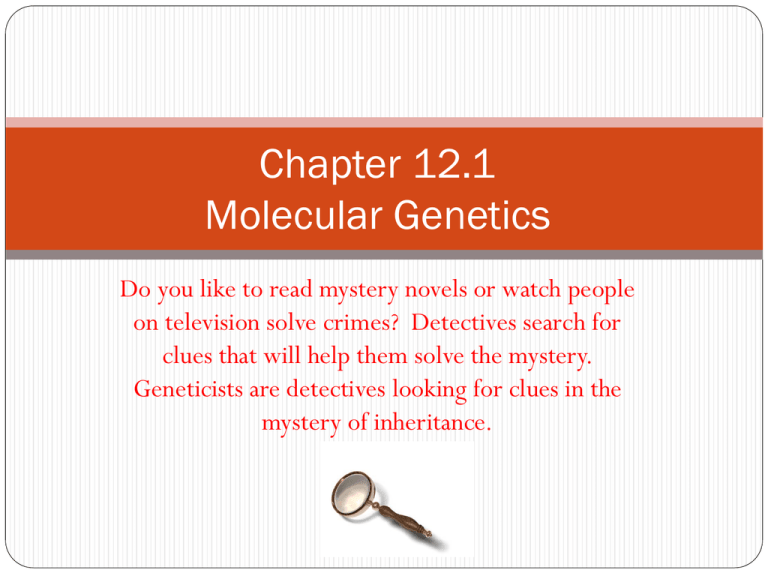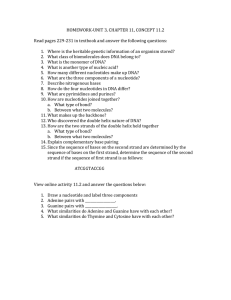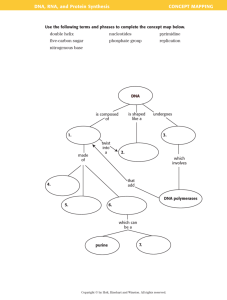12.1 Notes - West Branch Schools
advertisement

Chapter 12.1 Molecular Genetics Do you like to read mystery novels or watch people on television solve crimes? Detectives search for clues that will help them solve the mystery. Geneticists are detectives looking for clues in the mystery of inheritance. The Building Blocks of DNA The heritable genetic information of an organism is stored in the molecule called DEOXYRIBONUCLEIC ACID (DNA). The Building Blocks of DNA continued.. Nucleotides-are the building blocks (the monomers) of nucleic acid polymers. Only 4 types of nucleotides make up DNA. Notice that each nucleotide has 3 parts. 1. A ring-shaped sugar called DEOXYRIBOSE 2. A phosphate group 3. A nitrogenous base The Building Blocks of DNA continued….Pasting Activity… Nitrogenous Bases 1. Thymine ( T ) 2. Cytosine ( C ) 3. Adenine ( A ) 4. Guanine ( G ) DNA Strands Nucleotides are joined to one another by covalent bonds that connect the sugar of one nucleotide to the phosphate group of the next. This repeating pattern of sugarphosphate-sugar phosphate is called a sugar-phosphate “backbone”. DNA’s Structure The Double Helix-DNA forms a twisting shape Watson and Crick Complementary Base Pairs Watson and Crick realized that the individual structures of the nitrogenous bases determine very specific pairings between the nucleotides of the two strands of the double helix. A pairs with T G pairs with C Why do almost all organisms have the same genetic code? The genetic code is the set of rules by which a gene is translated into a functional protein. Each gene consists of a specific sequence of nucleotides encoded in a DNA strand; a correspondence between nucleotides, the basic building blocks of genetic material, and amino acids, the basic building blocks of proteins, must be established for genes to be successfully translated into functional proteins. The correspondence between codons (3 base code of DNA) and amino acids is nearly universal among all known living organisms. How does the universal genetic code support the theory of evolution? Genes are carried throughout time. Natural Selection reuses genes and structures that have been used in the past. Complementary Base Pairs continued.. Example problem: If six bases on one strand of a DNA double helix are AGTCGG, what are the six bases on the complementary section of the other strand of DNA? (when completed call me over to check it)







